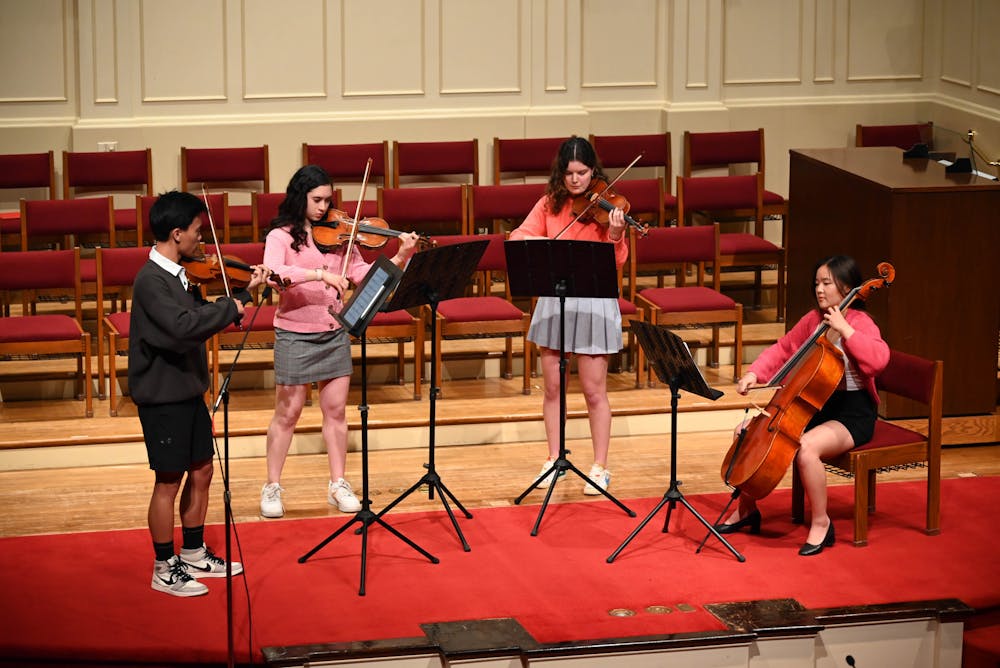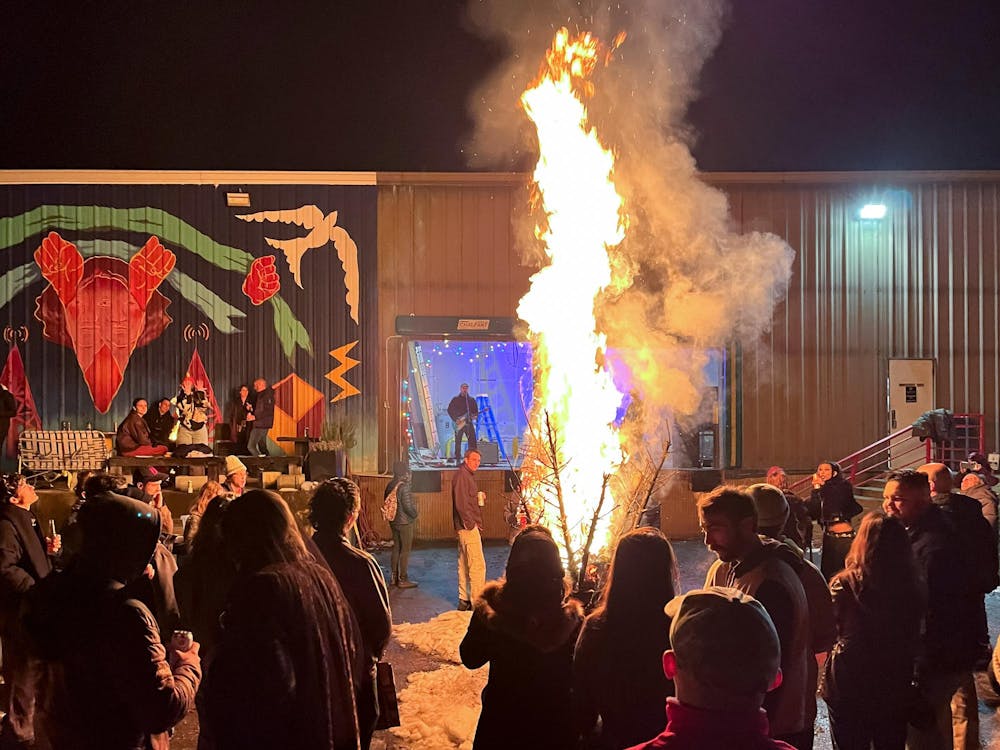As thousands packed in front of the Rotunda for the treasured Lighting of the Lawn ceremony, a festive tune began to permeate students’ chatter. It was Kelly Clarkson’s “Underneath the Tree,” but instead of brass or voice driving the song, it was a string quartet — a four-person ensemble consisting of two violinists, a violist and a cellist. Playfully bouncing their bows and sliding along their strings, the Radio Music Society was right at home, employing instruments found in the classical genre to reinterpret a contemporary pop song.
The first iteration of the Radio Music Society emerged when, in an effort to make music in a casual setting, four University students — class of 2015 alumni Alyssa Brown, Chris Lumain, Alex Lumain, and Brendan Rijke — met in 2011 to practice pop music they had arranged for a string ensemble. According to the organization’s website, the sessions were largely informal, as the friends played occasionally for audiences of a few friends or the maintenance guy.
With encouragement from their peers, the quartet delivered their first formal performance as part of a benefit concert hosted by the Organization of Young Filipino Americans. Spurred by the success of this gig, the four friends decided to expand their group, and in the fall of 2012, the Radio Music Society officially became a Contracted Independent Organization.
The distinctiveness of the Radio Music Society lies in their unconventional blend of genre and instrumentation. Though their music consists of string instruments traditionally found in a classical orchestra, the group plays music that dates back at most a few decades. According to Elizabeth Berman, president of the organization and fourth-year College student, this unlikely combination is precisely what makes listeners gravitate to the group.
“I think when [audiences] see violin, viola, cello, they generally expect it to be classical music and will maybe be disengaged or not really relate to it,” Berman said. “But then we bust out these tunes that they definitely know, so that might be Taylor Swift, Ariana Grande or Shawn Mendes … I think that that makes it more relatable for our audience.”
Since pop music is not typically written for the string quartet, the Radio Music Society arranges all of the music it performs, adapting it to fit the range and style of each instrument. Effective arrangement involves a number of factors, according to Berman, from concrete elements including playability and piece selection to more abstract details like musical interpretation and part distribution.
For Dylan Myaing, the organization’s vice president and third-year Education student, the best arrangements enable the quartet’s sound to shine while retaining the integrity of the original pop song. Myaing said he feels that his preparation of Sia’s “Elastic Heart” struck this balance particularly well.
“We took the pop side of it, but I also added some orchestral embellishments … so that it didn't adhere traditionally to one style or the other,” Myaing said. “It is a really nice middle ground, and I think that really accentuates our instruments — showing off the talents that they have as well as giving credit to the actual song itself.”
The organization’s approach of emphasizing relatability and originality has enabled the group to flourish since its founding. The group now consists of four unique quartets that each deliver a number of performances each year, including annual fall and spring concerts, gigs at the Dairy Market and farmers’ markets and performances at the Fralin Museum and weddings.
The past few months have been particularly eventful for the Radio Music Society. First, in December, the University’s Office of Advancement invited the ensemble to play at Capitol Hill. Then, their performance of “Underneath the Tree” was the group’s Lighting of the Lawn debut. Finally, before the close of the fall semester, the organization performed a mashup of “Simple Gifts” and “The Good Old Song” for a holiday Instagram video by University President Jim Ryan — a video which currently boasts nearly 80,000 views.
While contributions to the University and Charlottesville communities through performance are central to Radio Music Society, Berman asserts that equally important is the creative fulfillment that members are able to obtain via the group’s unique style. She explained that the society enables members to bridge elements of their musical identity that might otherwise remain separate.
“What [RMS] offers is a way to practice the skill that you love doing, so playing your instrument, and … relate it to something that feels more present-day and more part of your experience as a 20-year-old or 18-year-old — and that's pop music,” Berman said.
For more information about Radio Music Society, visit their website at https://www.rmsuva.com/ or hear their spring concert April 12 at 7 p.m. in the University Baptist Church.







